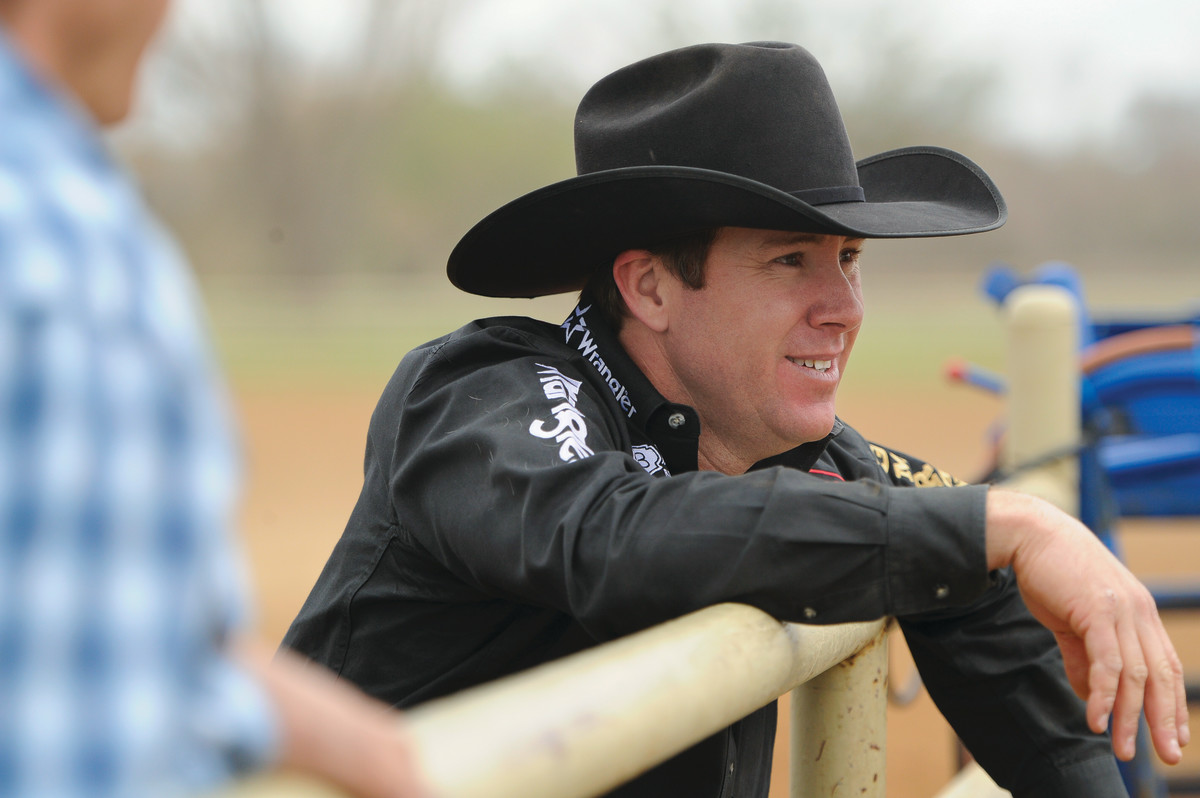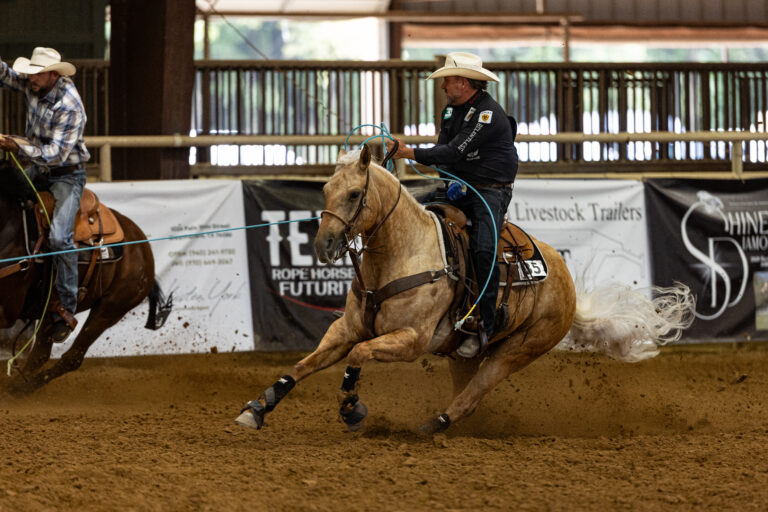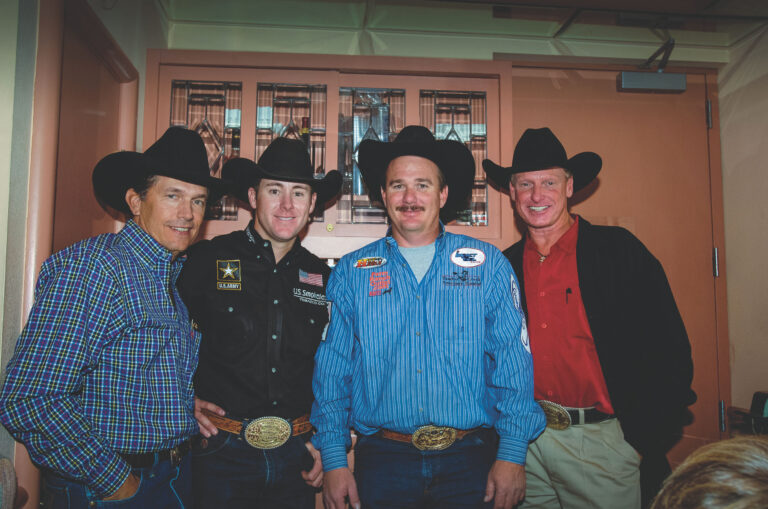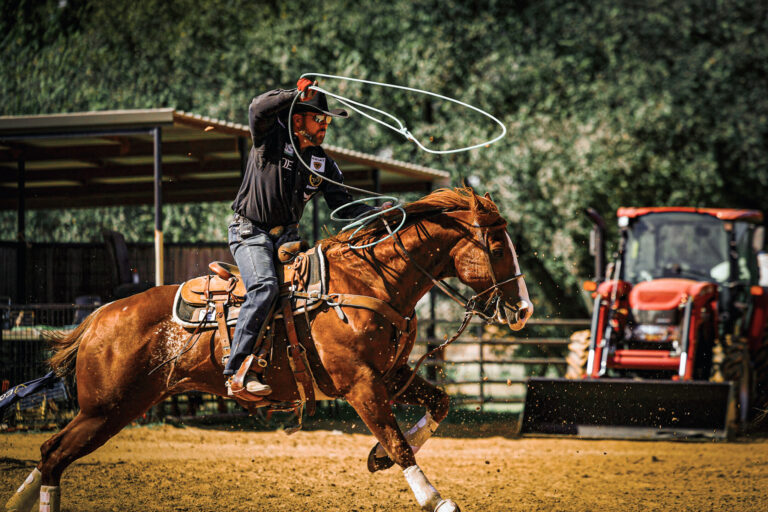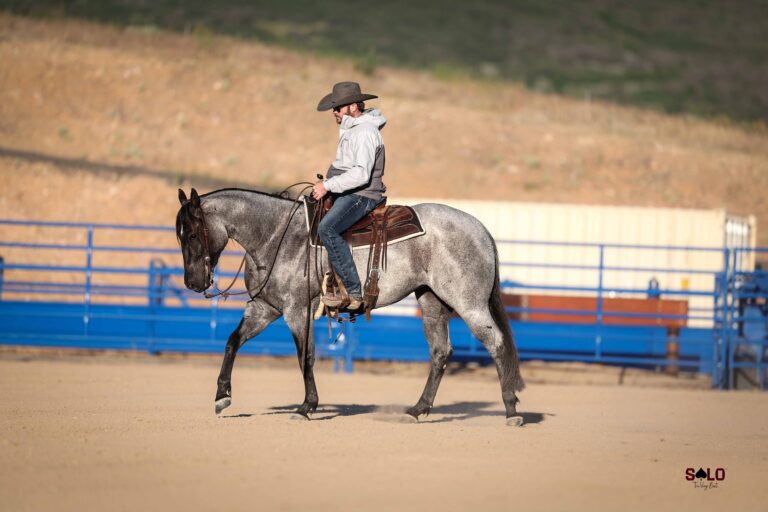Rodeo timed events are a unique discipline. Every other discipline is backing their horses off the bridle, constantly making sure they’re not in the bridle too much. Everything from scoring through the entire run, there has to be a perfect balance of foot on the brake and foot on the gas, and that’s the hardest thing to achieve in head horses and calf horses, that they’re not scared of the bit at all and you can get the response when you need it, but they’re not afraid to push into it when necessary.
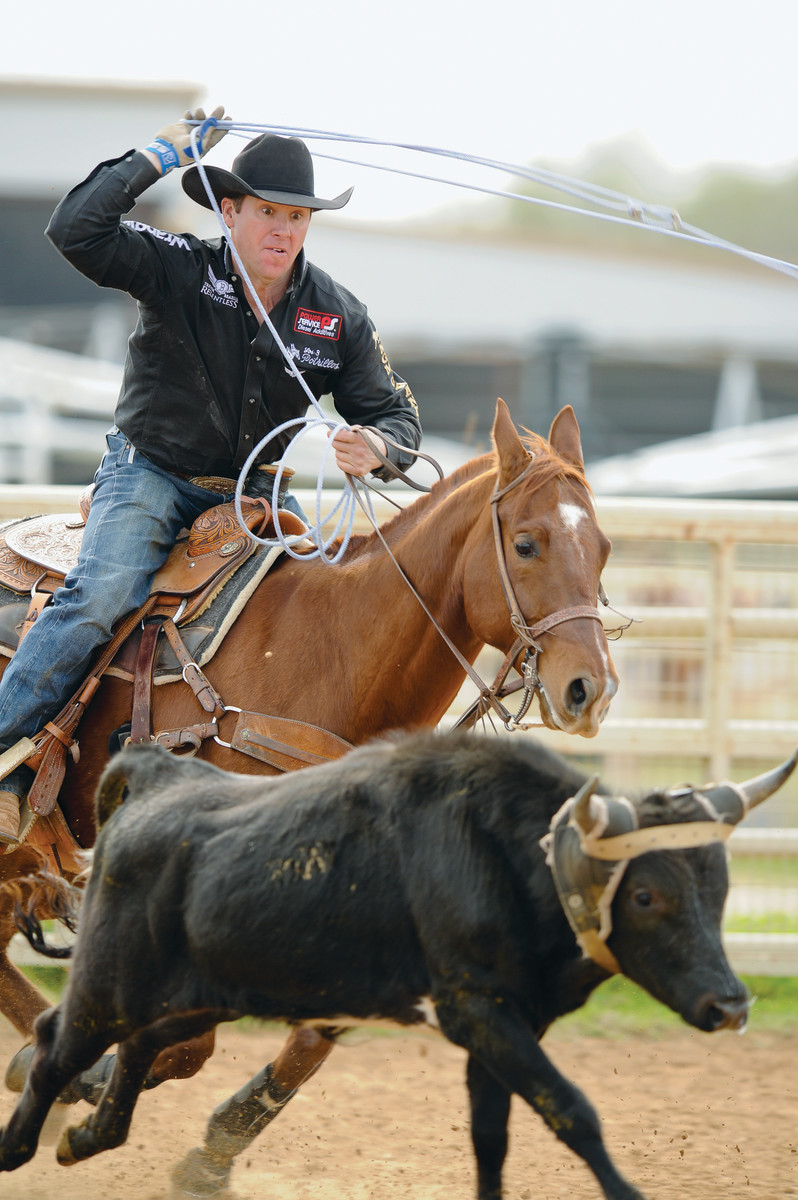
On my top calf horses, I might tie one down a day. I’ve always been from the school that when they do the job and give me everything, I put them up. I think that helps them to have the confidence that if they do it right and intense, they don’t have to do it 10 times. I just try to keep them sharp. I might score some, breakaway a few and tie one down. If you run a lot of cattle on horses, they’re going to start going at 70%–80% capacity and that’s not good enough.
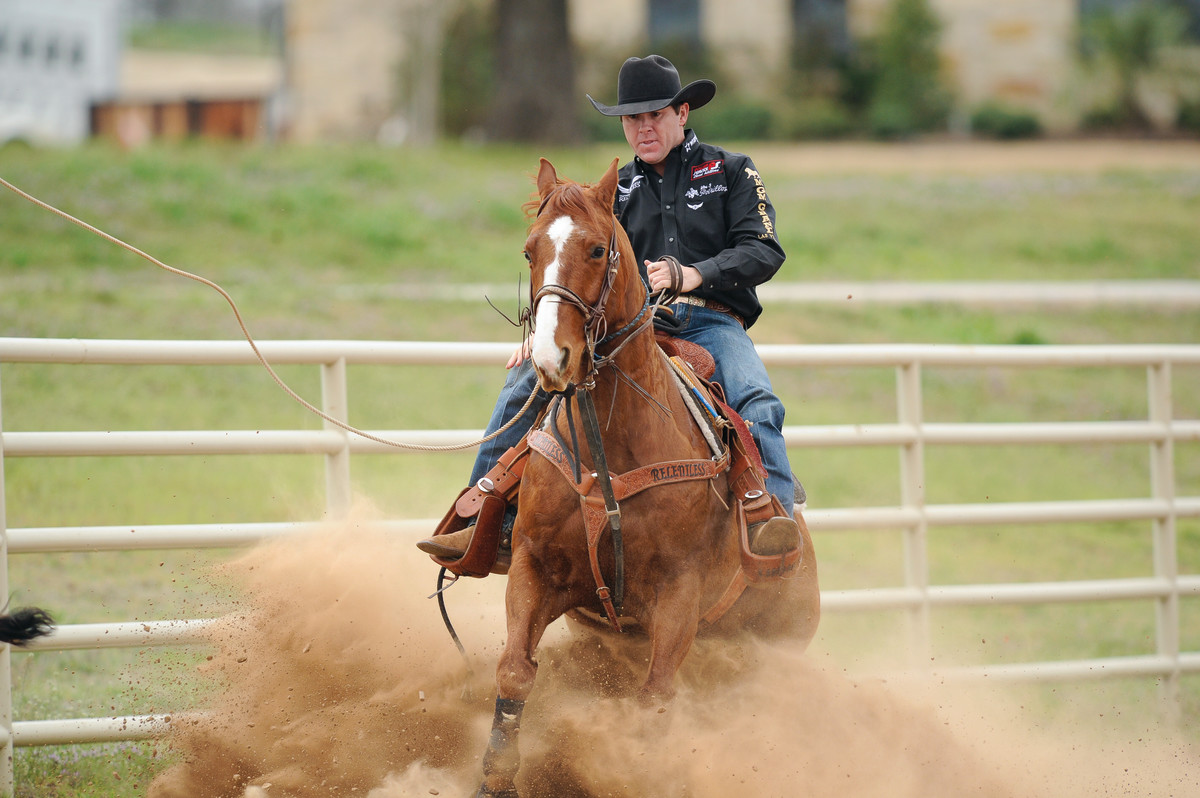
When it comes to exercise, the primary form my horses get is long trotting. I like to lengthen everything out. When I’m rodeoing, I like to ride them every day so if they’re off at all, I can diagnose it so it doesn’t snow ball. At home, I get great benefit out of the Priefert Panel Walker because it enables me—even when I leave home—to keep a consistent program. I have different programs for different horses—rehab, hard workout or light workout—I’ve customized all of them so whoever is helping me at the time can keep each horse in shape. I still like to have a saddle on their back two or three times a week, just because it keeps them from getting galled or having cinch sores.
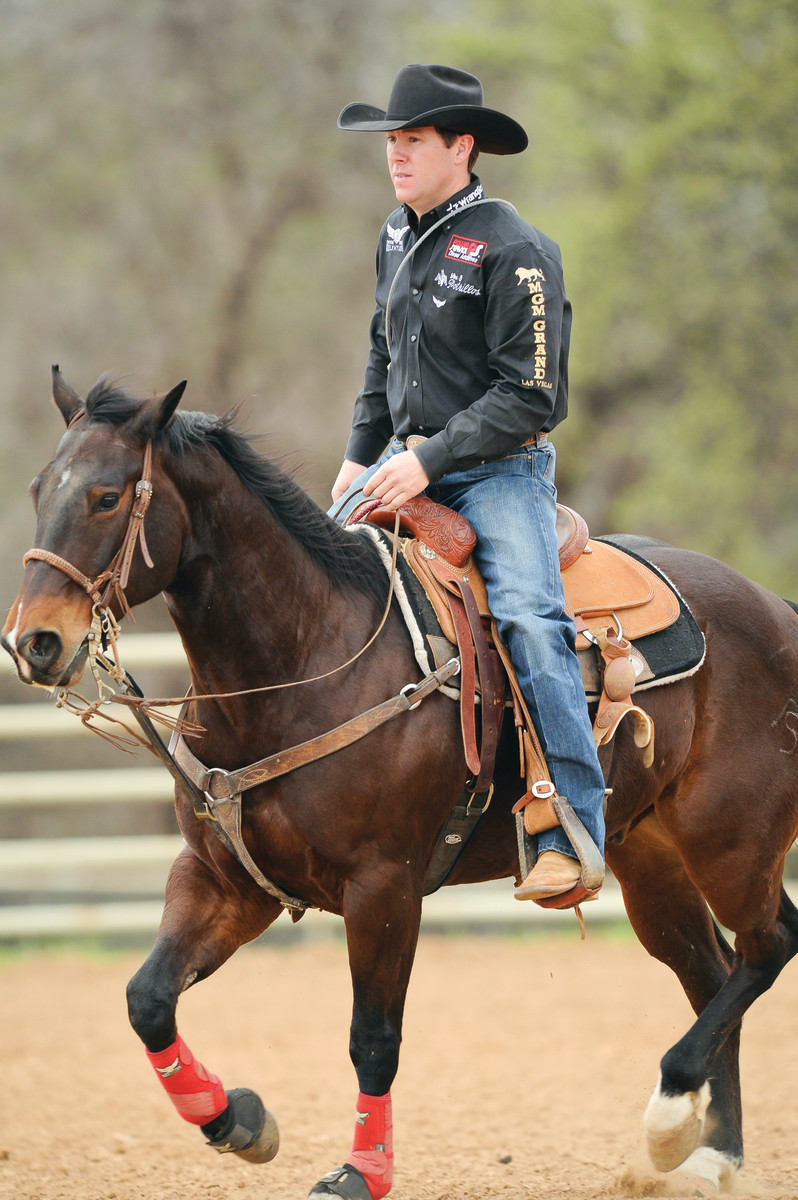
In saddles, the most important thing is the tree. there’s some extra cost in my saddle, but I think there’s more value there because we’re all about the tree first. I rode handmade saddles my whole life. So I wanted custom saddle quality without custom saddle wait. There are other things that I’m particular about. I don’t like a big d ring in a cinch because I keep my horses a touch on the heavy side and a big cinch buckle can rub them behind the shoulder.
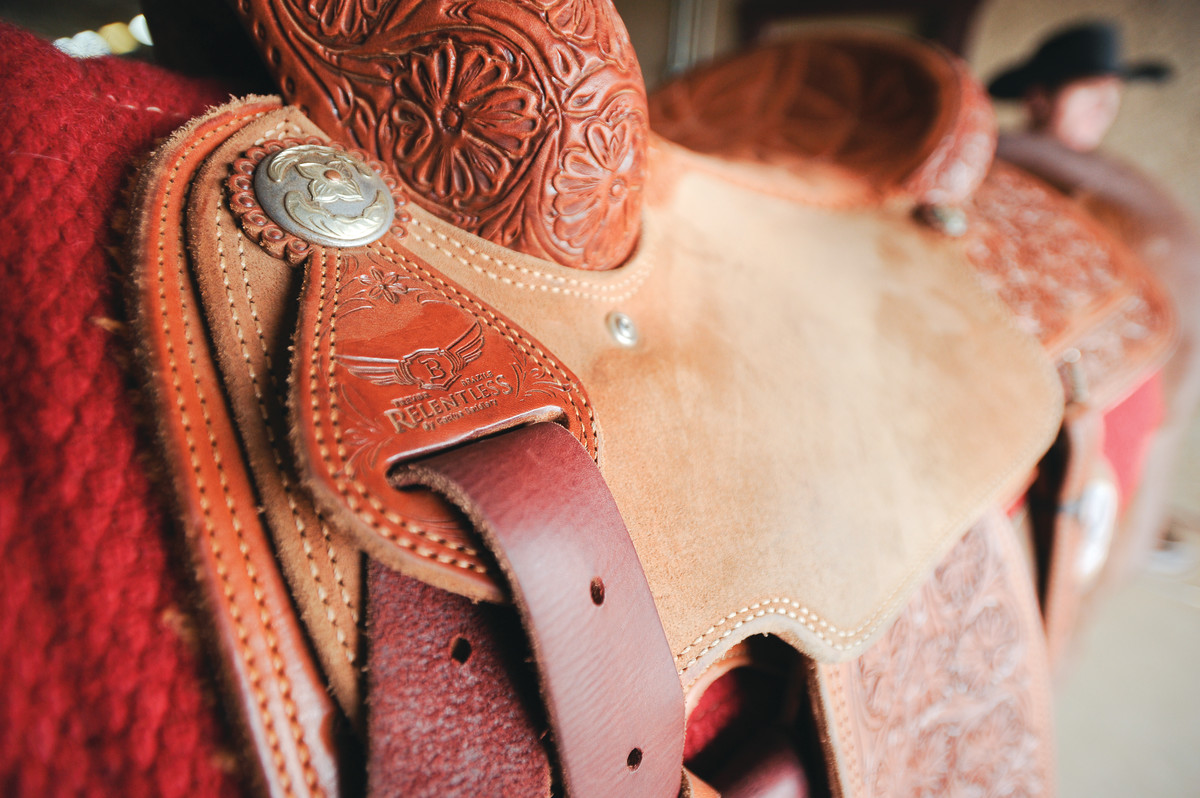
When we go to rodeos and we only have a few hours and there’s not time to bed a stall down, little things like the Soft-Ride boots help. We can deal with less-than-ideal footing for them to stand tied to the trailer with those boots on. I always have lots of shavings in the trailer and try to keep the trailer clean, to keep the ammonia smell down. Traveling as many miles as we do, that really helps your horse’s health.
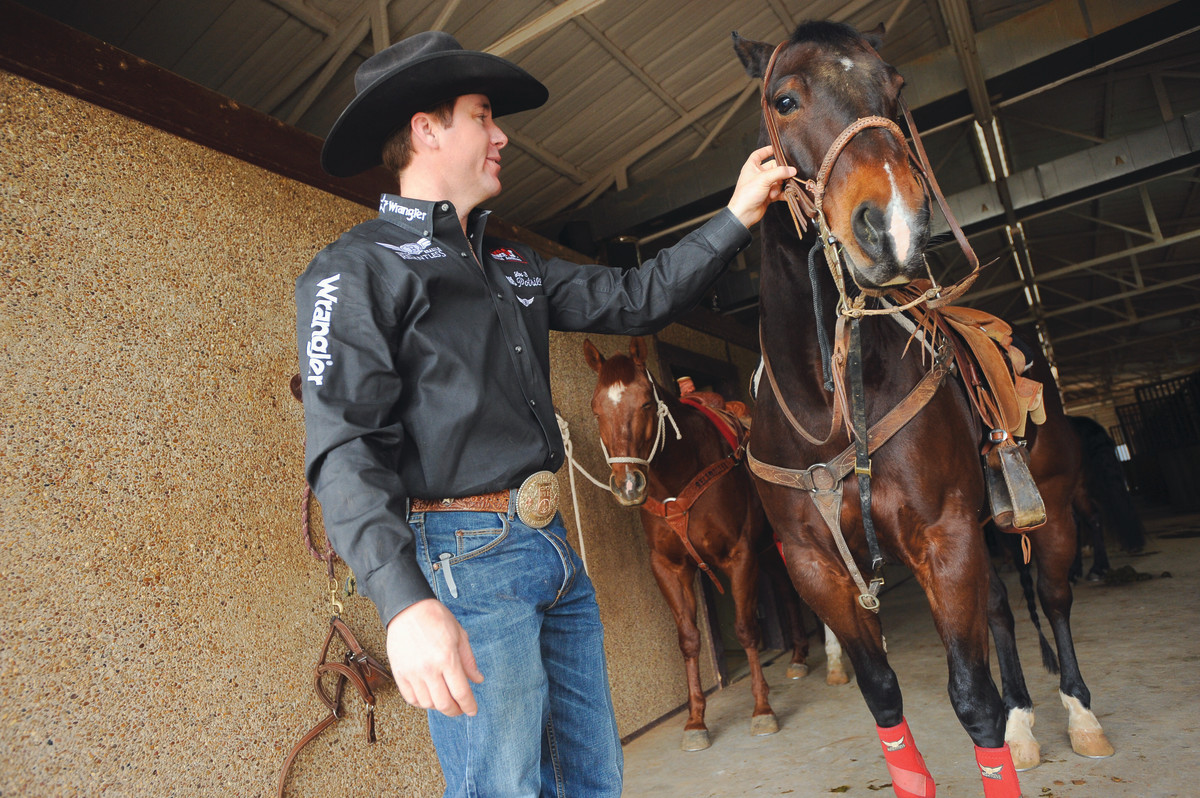
I usually feed alfalfa because I’ve found it’s just so much easier to find consistently as I travel. I feed a 14% protein dry mix from Martindale feed Mill. it has less molasses and in the summertime, that really helps keep the flies down, plus it has everything else the horses need. I come on top of that with Platinum’s Complete Joint supplement. It’s got the regular Platinum in it with the joint supplement as well. I’ve had real good luck with that as preventative maintenance. It just seems like when you take these horses thousands of miles to compete, you don’t want to take the chance of soreness becoming an issue.
